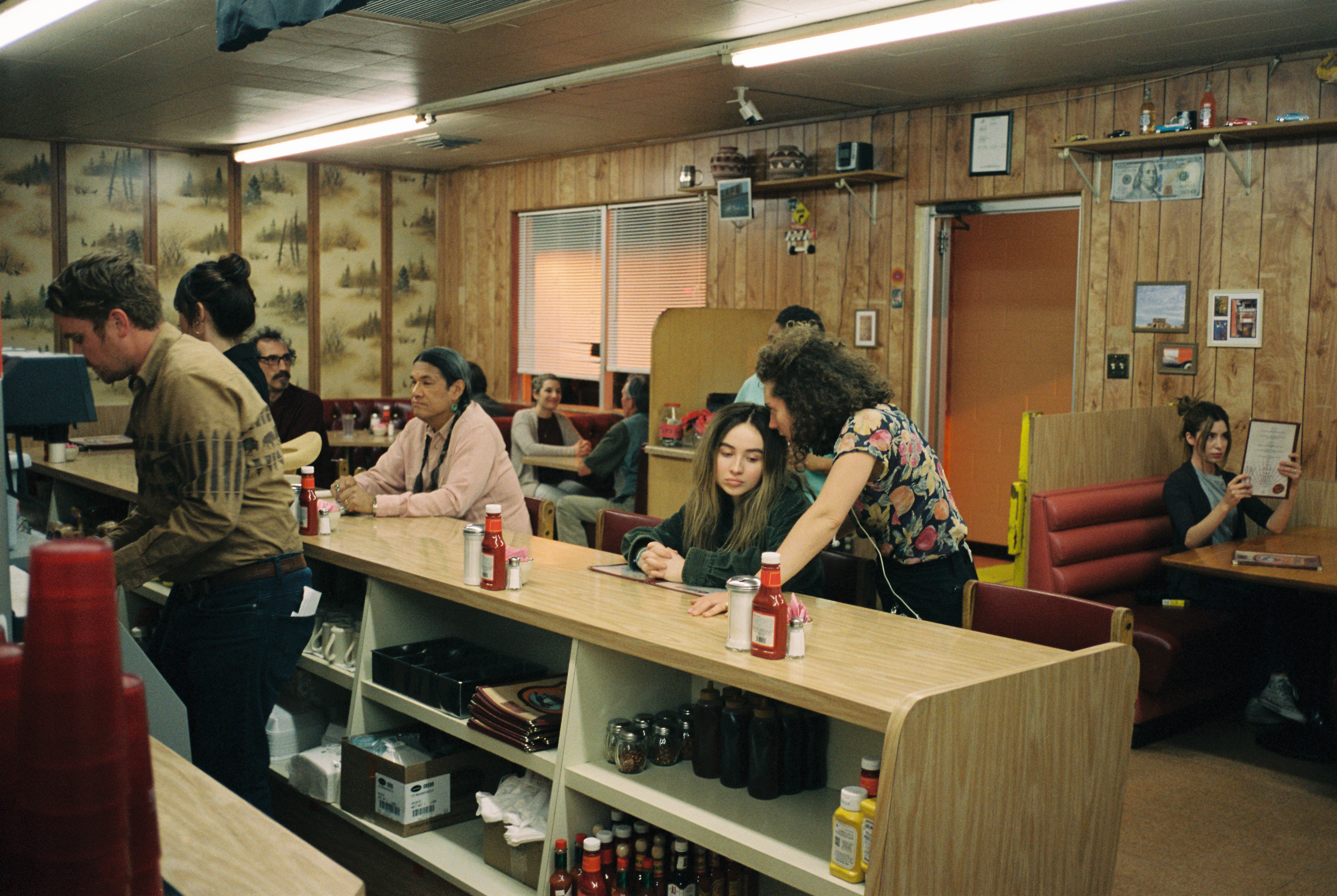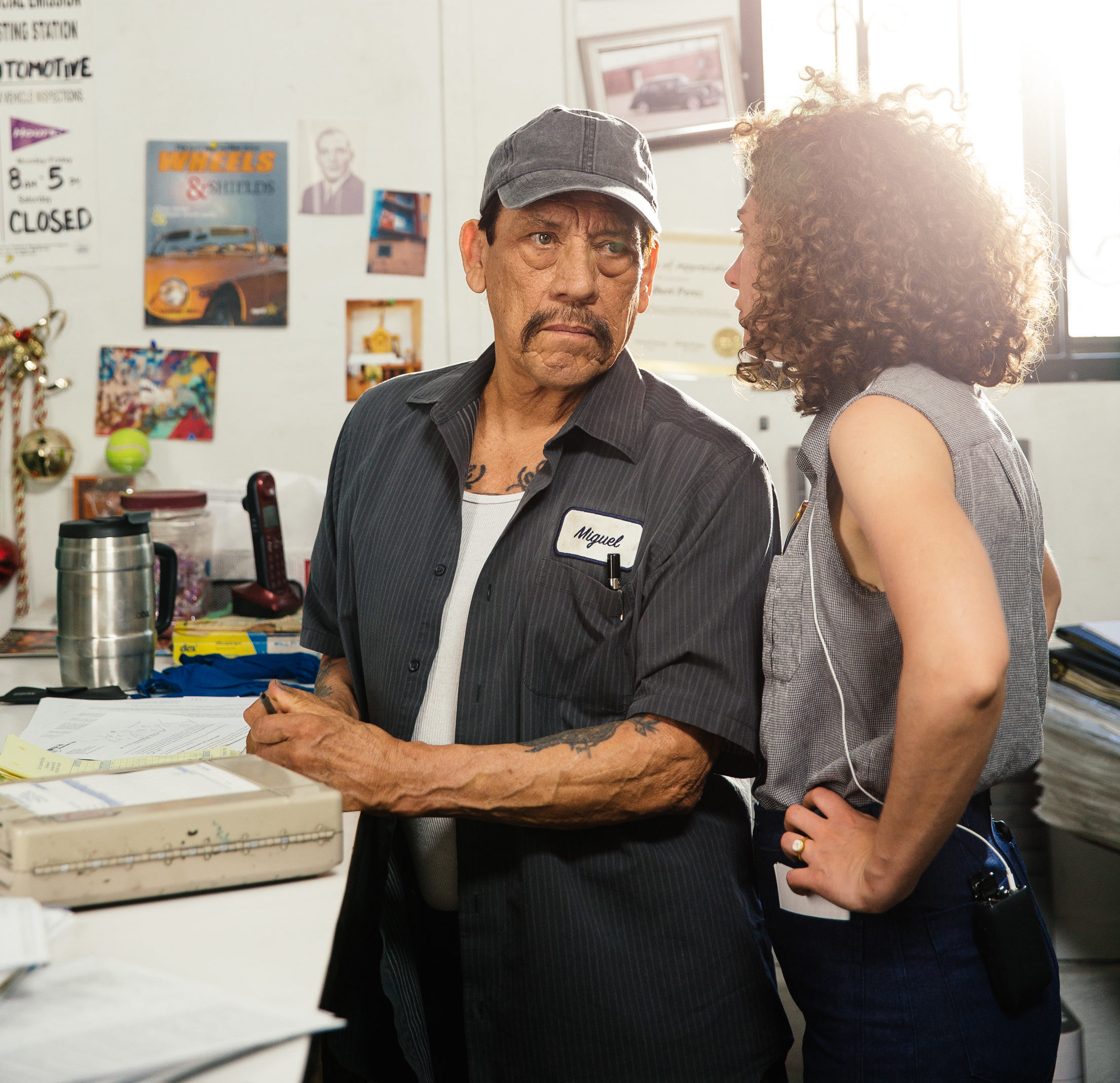About Ani Simon-Kennedy
Raised in Paris and based in New York, Ani Simon-Kennedy is a feature film, documentary and commercial director. Under the banner of Bicephaly Pictures, she collaborates with cinematographer Cailin Yatsko on socially-conscious stories.
Her first feature film, Days of Gray, played at top festivals around the world with an original live score by Hjaltalin. Her second narrative feature, The Short History of the Long Road will premiere at the 2019 Tribeca Film Festival.
Lunacy Productions: How does it feel to have your film, The Short History of the Long Road, premiering at Tribeca?
Ani Simon-Kennedy: The Short History of the Long Road is a project that I’ve been thinking, writing, and dreaming about for the last four years. It’s so great to have it come to life.
Having the film premiere at Tribeca is such a dream come true. Tribeca has been incredibly supportive of my work and of this project. We were also a part of Tribeca All Access two years ago. We also did a program called Untold Stories with Tribeca and AT&T, as well as Through Her Lens with Chanel. Getting all those grants and support really validated the project.
LP: Elaborate on those grants and how they helped shape the film?
ASK: Tribeca’s programs are always a combination of grant money, mentorship, and industry connections. Grant money is wonderful, but because film is so collaborative, you can’t do anything alone. The reason Tribeca grants are so amazing is because they give you access to industry insiders and industry veterans who can help the project actually materialize.
In the case of Tribeca All Access, for example, I pitched my project to people who had the capacity to make the script actually become a movie — distributors, financiers, and production companies.
When I made my first feature, Days of Gray, we just went off and made it. It was an incredible learning experience. We raised the money on KickStarter and got a group of our friends together. It’s a much steeper mountain to climb, as far as getting into festivals. It was on that festival circuit that I realized many indie movies get more press and attention because they’ve been on people’s radars for years. When you are tracked through the labs, grants, and workshops, it spreads awareness of a project before it even exists.
Ani Simon-Kennedy and Sabrina Carpenter discuss a scene while shooting The Short History of the Long Road.
LP: What advice do you have for filmmakers applying for grants?
ASK: Apply to anything and everything under the sun. As a filmmaker, you have to realize that it’s totally a numbers game. You can’t win the lottery unless you buy a ticket. If you buy a hundred tickets, you’re really upping your chances.
Applying to grants is a great exercise as a filmmaker. Many of the applications have a lot of the same core questions like — Why do you want to tell the story? Why are you the right person to tell the story? Why does this story matter now? Being able to articulate those answers really sharpens your script.
Obviously, if you do get in, then that really helps legitimize the project.
LP: Tell me a little bit about your work with Stu Pollard and Lunacy Productions.
ASK: They’re great. I love those guys. They’re so wonderful. I was introduced to Stu through a producer named Drew Houpt, who’s also a good friend that I met through a lab. He put me in touch with Stu in September of 2017 and Stu came on board soon after.
He was very gung-ho and “in it,” and in it for the right reasons. We talked on the phone, and he was excited, which was wonderful. That’s rare. I think he really got to the heart of the story that I was trying to tell.
Once we were editing, Stu had really great notes. I had never worked with him before and so you just never really know how someone’s going to react. He was super hands-on, happy to be of help, and had very specific ideas. To get such incredibly thoughtfulness on notes in the edit was just just above and beyond the call of duty. It was never expected, but was very much welcome.
There were a couple of stylistic elements that I was on the fence about. In my gut I knew what the right answer was, and he was really great at solidifying that for me. He was also wonderful about pointing out the good stuff.
Ani Simon-Kennedy and Danny Trejo prepare to shoot on the Short History set.
LP: Is there particular theme or a personal observation about the world that inspired the characters and story in Short History?
ASK: I grew up in France with American parents, and I’ve been living in the States a little over 10 years now. Living in a country that has no safety net is a very different experience when you grow up having all of that as a given in Paris.
The Short History of the Long Road is a road trip movie about a girl named Nola (Sabrina Carpenter) who grows up with a very self-reliant father, and they’re living out of their van. It’s about discovering the subculture of van-dwelling and meeting people who’ve been living out of their vans by choice.
The story was certainly influenced by my observations of the precariousness of living in America and what happens with the exorbitant income inequality here. It’s just so unforgiving in the States in a way that’s very harsh to witness if you’ve lived in another system. There’s no right to housing in the US which France has. The same way that you have a right to education and healthcare. Those are basic human rights in France and Europe, but not in the US.
What ends up happening in the States is that people look out for each other. People weave social nets for themselves to catch each other because there isn’t an overarching one.
The movie is about all of the encounters that Nola has along the way. She sees how different people are making a life for themselves and how the self-reliance takes different forms. Danny Trejo’s character, for example, is an immigrant who is an auto body shop owner, who demonstrates self-reliance in completely to isolating himself. When he takes her in, it’s an incredible act of kindness.
LP: Why do you love making movies?
ASK: I make movies to travel and I travel to make movies. My two favorite things end up feeding into each other. My first feature was made in Iceland and I’d never set foot there before. Filmmaking is such a wonderful way to get to know a place and meet people. When I was writing the script for The Short History of the Long Road, I did a solo road trip to New Mexico and was living out of a car for a little bit.
LP: Was there a creative risk that you took in the script or the direction that you didn’t know how it was going to turn out, and now you’re really happy you did it?
ASK: I would say the casting process was risky. The casting process was very unusual for the lead roles. We had an all-local cast, except for our lead, Sabrina, and then the five other biggest parts.
As far as casting Sabrina, I had a very unorthodox method that seemed like a gamble from the outside, but was actually the only way I knew to make it work. This entire movie lives and dies on Sabrina’s performance. Originally, we were going the very traditional Hollywood route, sending in offer letters via agents at agencies and waiting to hear back. However, I decided to make the casting process more personal, which is not common in Hollywood. I decided to stop doing offer letters and just meet actors in person to get their genuine response to the script.
After a round of coffee meetings, I started auditioning. I brought in six actors, and it was really more like a workshop than just an audition. Of the six, Sabrina just nailed it through and through. That process definitely went against the grain of how people traditionally cast, but I would definitely do it again.
Ani Simon-Kennedy’s second feature, The Short History of the Long Road, is premiering this weekend at the Tribeca Film Festival! Keep reading the Lunacy Productions Blog for more info on the film!



